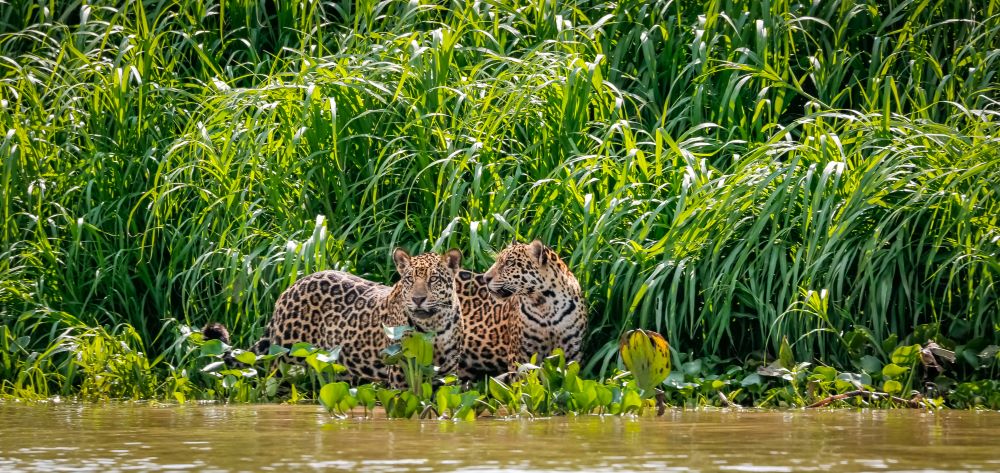
Understanding the Conservation 30×30 Target
Shrinking biodiversity and increasing climate change are twin environmental crises. And like most twins, they are inseparable. As each problem grows worse, it reinforces the other. Similarly, any action that fights climate change also helps to protect biodiversity and vice versa. One of the most effective ways to keep carbon in the ground and species in the landscape is habitat protection. Enter the United Nation’s 30×30 target to protect 30% of the planet by 2030.
Biodiversity and Climate
The term biodiversity most commonly refers to the number of species in an ecosystem. It works as a shorthand for the complexity of the system. More diverse ecosystems tend to be more resilient than simpler ones. But it is impossible to predict the results of removing a species from an environment. Keystone species can play an outsized role in maintaining an ecosystem. Similarly, there are keystone ecosystems – biodiversity hotspots – that provide outsized ecosystem services globally.
Aside from a changing climate, the primary causes of terrestrial habitat loss are deforestation and desertification, both of which contribute to climate change. In marine environments, overfishing combines with pollution and warming waters to reduce biodiversity. Since not all ecosystems are equally valuable, an area-based conservation goal comes with inherent risks. But there is no question that habitat conservation is a critical tool in the global effort to stop climate change and preserve functional ecosystems.
United Nations Framework on Biodiversity
At the Rio Earth Summit in 1992, the United Nations presented the Convention on Biological Diversity. It has since been ratified by 193 nations (the United States is not one of them). Every 10 years, the convention gathers to determine a new framework for protecting biodiversity for the next 10 years. The newest framework was adopted at COP15 in Montreal in December 2022. The framework contains four overarching global goals with 23 specific targets. The process almost broke down over the questions of financial support to poor nations for conservation and the protection of indigenous peoples’ land rights. But the aspect of the final agreement that has gained the most attention is target 3, known as the 30×30 target.

30×30
The target to protect 30% of the Earth’s lands, oceans, coastal areas, and inland waters – basically, 30% of the planet – by 2030 is the most ambitious conservation goal set to date. In its entirety, it reads:
Ensure and enable that by 2030 at least 30 per cent of terrestrial, inland water, and of coastal and marine areas, especially areas of particular importance for biodiversity and ecosystem functions and services, are effectively conserved and managed through ecologically representative, well-connected and equitably governed systems of protected areas and other effective area-based conservation measures, recognizing indigenous and traditional territories, where applicable, and integrated into wider landscapes, seascapes and the ocean, while ensuring that any sustainable use, where appropriate in such areas, is fully consistent with conservation outcomes, recognizing and respecting the rights of indigenous peoples and local communities including over their traditional territories.
Critics claim that 30×30 is a more media-friendly target than a scientifically grounded one. It certainly is catchier than the names adopted for most intergovernmental initiatives. And it’s not easy to tell how the initial journal article that inspired the target determined the 30% number. But a review of the relevant scientific literature confirms that previous targets were inadequate to curb climate change or preserve biodiversity. Reports shared by the Convention support the scientific value of the target. If the number is not correct, it is a step in the right direction.
Critically, the new goal recognizes that which areas receive protection is as important as the amount of area that is protected. It also acknowledges the importance of connectivity among protected areas. Currently, one-third of key biodiversity areas lack any protection at all and less than 8% of all land areas are both protected and connected. Marine biodiversity hotspots have not even been fully identified yet.
Implementation
Perhaps the more crucial question is whether nations will achieve – or even pursue – the agreed target. Past performance is not promising. So far, none of the Convention’s targets have been met, with only about 5% of participating nations even coming close. A quarter of them took no significant action at all. Meeting the 30×30 goal will require almost doubling the amount of land that is currently protected, and nearly quadrupling protected marine areas.
Biden’s January 2021 executive order pausing new oil and gas leases on public lands also included a goal to protect 30% of U.S. land and coastal seas by 2030. The quickest ways for the U.S. to make progress on this goal are to expand national monuments, which the president can do without Congressional approval, and to reduce extractive industries like fossil fuel drilling and logging on public lands – a more challenging task. You can encourage your representatives in Congress to support conservation goals on public lands. However, with 70% of U.S. land in private hands, achieving 30×30 will also require private conservation efforts.
Services Marketplace – Listings, Bookings & Reviews